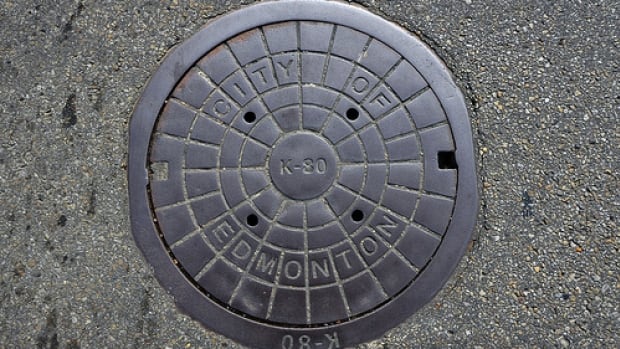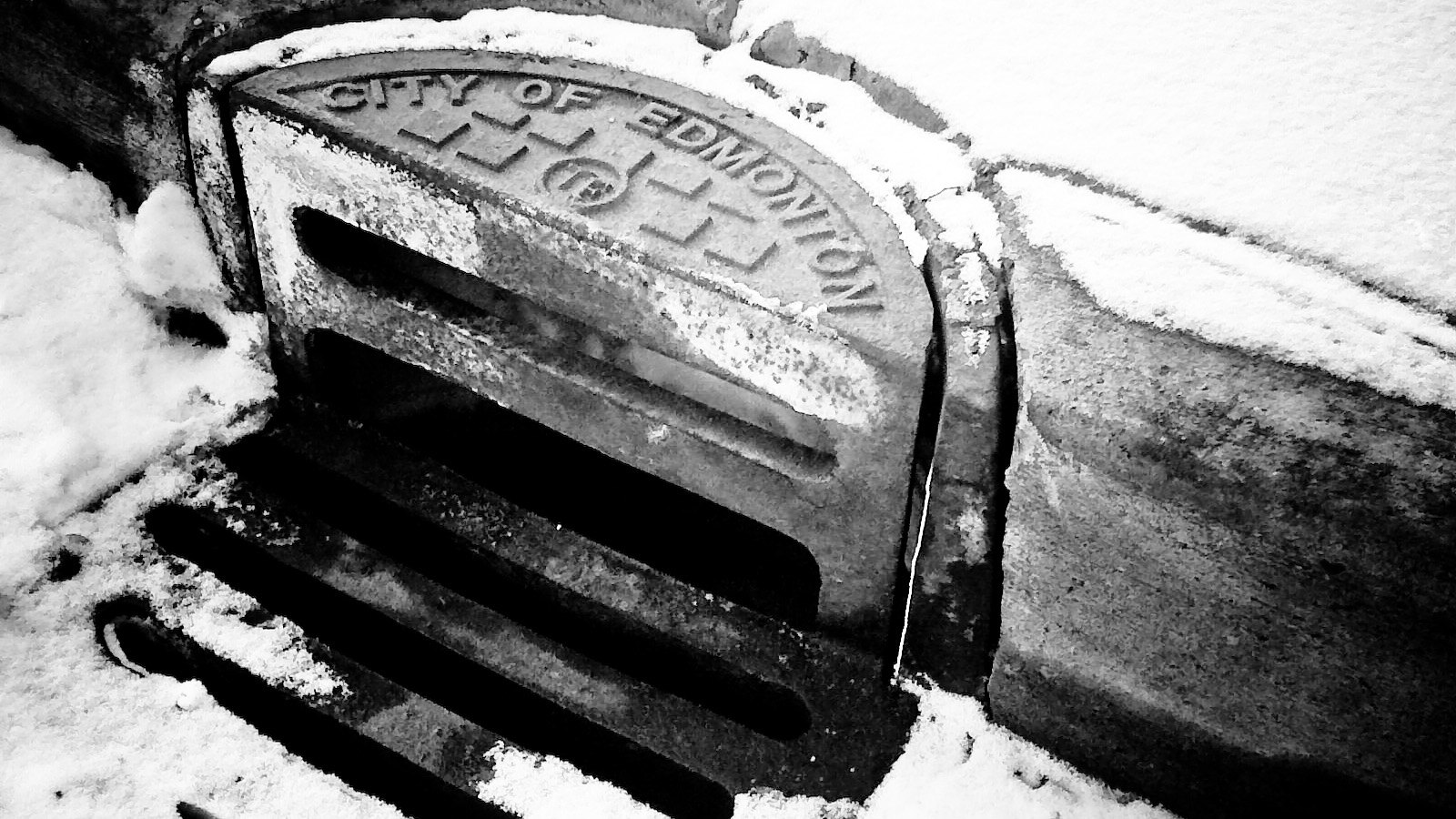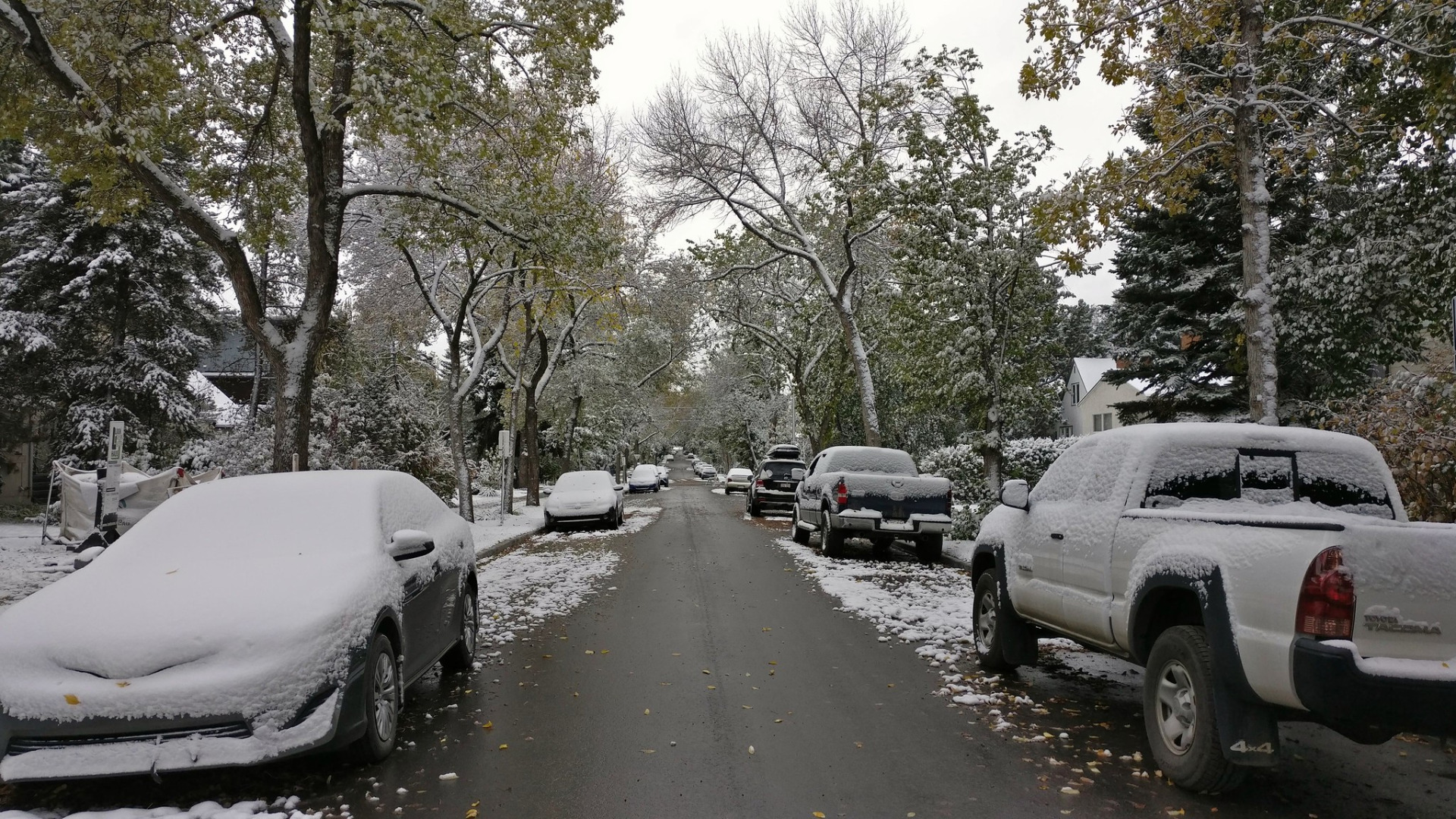Edmonton is prone to flooding, particularly during periods of heavy rainfall or snowmelt. Drainage is very important all year round but it is crucial during major summer storms and spring snow melt.
Our Drainage Systems
Our drainage systems are designed to collect and remove stormwater runoff from streets, sidewalks, and other impermeable surfaces, and transport it to a discharge point, such as the North Saskatchewan River. The main purpose of a drainage system is to prevent flooding and protect public health and safety. Stagnant water can be a breeding ground for mosquito-borne illnesses, bacteria, fungus and algae. Standing water can also gradually erode building foundations and other infrastructure.
A typical drainage system includes a network of underground pipes, culverts, and channels that collect stormwater and convey it to a discharge point. The system may also include open channels, retention ponds, and other structures to manage stormwater runoff.
City of Edmonton drainage systems are designed based on a number of factors, including the size of the watershed, the intensity and frequency of rainfall events, the topography of the area, and the presence of infrastructure such as roads and buildings.
What is a Manhole?
A manhole is an opening in the ground that provides access to underground utilities, such as sewers, stormwater drains, electrical and communication cables, and gas pipelines. Manholes are typically round in shape (in Edmonton) and vary on their size depending on their intended use.
Manholes are usually made of concrete. You will find them located along streets or in parking lots to provide access for maintenance and repair crews. Manholes can also be used for ventilation or to allow for overflow during heavy rain events.
To access the underground utilities, a trained maintenance professional must remove the manhole cover, which is usually made of cast iron or steel and can weigh up to several hundred pounds. Once the cover is removed, the opening is usually large enough for a trained professional to climb down and perform maintenance work.

City of Edmonton Manhole cover
Manholes can become Clogged or Plugged Up Due to a Variety of Reasons
- Accumulation of debris: Manholes are often located at the lowest point of the drainage system, which mans they can collect a lot of debris and sediment over time. Leaves and rocks can accumulate and eventually block the flow of water. A repetitive freeze thaw cycle will also cause ice to dam up and block the manhole.
- Fats, Oil and Grease buildup: Have you seen those City of Edmonton tv commercials on asking to store grease not pour? Pouring grease down the sink is a costly social problem. Manholes located near restaurants or other commercial kitchens often become clogged due to the buildup of grease and other fats in the sewer line.
- Tree roots: Tree roots can grow into sewer lines and cause blockages. Roots will seek sources of water, and if there a leak or crack in the sewer line, roots will often grow into the pipe. Ingrown roots can cause a backup up sewage into your basement.
- Foreign objects: Manholes can become blocked due to an introduction of foreign objects, such as diapers, wipes and feminine hygiene products, which don’t break down easily.
- Failing Infrastructure: If the infrastructure of the sewer system is deteriorating, it may be more prone to blockages and other problems.

Blockages Cause Sewer Backups and Overflows
If not addressed, manhole blockages can cause serious problems such as sewer backups, overflows, and environmental damage. Regular cleaning of stormwater catch basins, inspection of pipes and culverts, and repair of any damage can help prevent blockages. The City of Edmonton has also been working to upgrade ageing drainage systems to ensure sewer systems are functioning properly.
Bolson Engineering and Environmental Services is passionate about development. We have partnered with commercial property owners and commercial brokerages such as Avison Young and Omada to streamline the buying, planning and development process. It pays to know what you are signing up for. We have had the opportunity to design, rezone and project manage some awesome commercial developments across Alberta. Have a vision? Let us engineer your ideas. Contact us.

